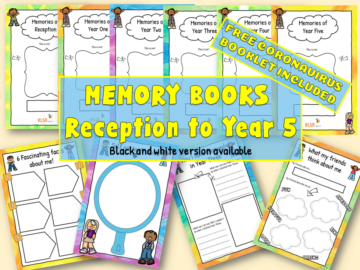Working with Puppets
Working with Puppets, how to use puppets in ELSA sessions.

Puppet are a fabulous tool for working with children. Children really respond to a puppet. They are nonthreatening and appealing to children. I asked the question in the ELSA Group. How do you use puppets in your sessions and these are the responses so thank you so much to those who offered their ideas.
How to use ‘Working with Puppets’ in your sessions?:
- Talk about issues puppet to puppet, so ELSA has puppet child has one and the puppets talk to each other. This eases the pressure on a child so not actually talking to the adult.
- Use two puppets yourself to tell a story or show appropriate dialogue. IE. How to initiate a conversation at a new school. Then child had one and you redo together.
- Give the child a puppet or puppets and let them tell you a story.
- You can make a house with rooms and use puppets as the people in the house and get children to act out what happens at home.
- Reenact situations that have happened eg. Falling out on the playground, throwing something when angry etc, then act out a different ending to that situation.
- Make their own puppets as a getting to know you activity. Or make feeling puppets decorating them with things that match how they feel when they have that emotion.
- Let them choose from a range of puppets and act how the puppet would. This is a good reflection of how they are feeling.
- Use puppets with a child who is selective mutism. ..let them through the puppet. Good for very shy children too.
- Use a puppet to use a behaviour issue that you are trying to support – puppet keeps butting in or puppet says unkind things.
- Choose a puppet that has their characteristics/ what they’d like to be/how they feel they are etc.
- I’ve used puppets to explain an emotion ks1 as they seem to watch the puppet and I’ll explain why the puppet is going what he’s doing. Giving them a turn so they act out the emotion. The laughs and the fun is fab and they leave understanding the emotion. The next session we just do a quick act with the puppet and then ask them about the emotion when they feel it. It’s the easiest way I find to get them to understand their emotions and behaviour.
- Spend a few sessions making puppets. Once busy making, ask questions like “If your puppet could talk, i wonder what it would say?” Or “is your puppet going to be a kind puppet, or angry puppet………what makes your puppet kind/angry”
- Persona puppets to promote communication in non verbal children.
I had great success using puppets with one child who had limited speech & language and minimal social skills. We had a large puppet each and used them pretending mine was a new child at school and feeling scared and anxious. We gave our puppets names and I asked what his could do to make mine feel better. He became a different child! Smiling, changed his own voice for the puppet, gave mine a hug and gave a couple of suggestions to help. Obviously I was asking open questions to prompt him but I could not get over the effect of the puppets. We then went on to play hide and seek with the puppets, taking turns to count and literally hiding them around the room. He loved it, was really animated and laughing which I’d never seen before. So I can’t recommend puppets highly enough.
- Used finger puppets as family members to start a conversation.
- Use a puppet to tell you what it thinks the problem is and then relay it to the child…the child normally ends up smiling/laughing and wants a go with another one.
- I’ve used them for group work. The children have to come up with a script for a short play on a subject I’ve chosen, such at ‘dolphin hasn’t been invited to a birthday party’ it’s great seeing them work as a team and then we discuss how dolphin may have felt.
- Use puppets for choosing. Lay out hula hoops with different emotions and ask different scenarios. Get the child to put the puppet in the appropriate hula hoop.
- Enact different communication styles such as passive, aggressive, assertive communication.
- Enact non verbal communication using puppets.
- Use a puppet to relay information to the child. They will be more likely to listen and retain.
- Use the puppet to say the wrong words or say things incorrectly so the child has to correct the puppet.
- Use the puppet to help stimulate a child’s imagination.
Would you like a copy of these ideas in PDF format for your file?
Download: How to use puppets
Other Resources you will love!
Memory Books for transition – Item 368
I was asked to adapt the Year 6 memory booklet for other year groups so here are booklets for Reception to Year 5 (Please note…
£3.50
School Holiday Wellbeing Pupil Leaflet – Item 614
This is a 'School Holiday Wellbeing Pupil Leaflet'. It is written in a child friendly way so pupils will understand. This leaflet looks at how…
£1.75
Thoughts Feelings Sensations Actions – Item 185
This is the Thoughts Feelings Sensations Actions resource. It explores lots of different emotions. Children can see the connection their thoughts have with their feelings,…
£2.00






hi Debbie
I’m messaging to ask if you have any resources for shyness in particular what it means to be shy and how to get braver in speaking up for children in year 5 and 6 at primary school.
many thanks Kathy
Hi Kathy,
I am making one now and it will be on the site soon.
Best wishes
Debbie